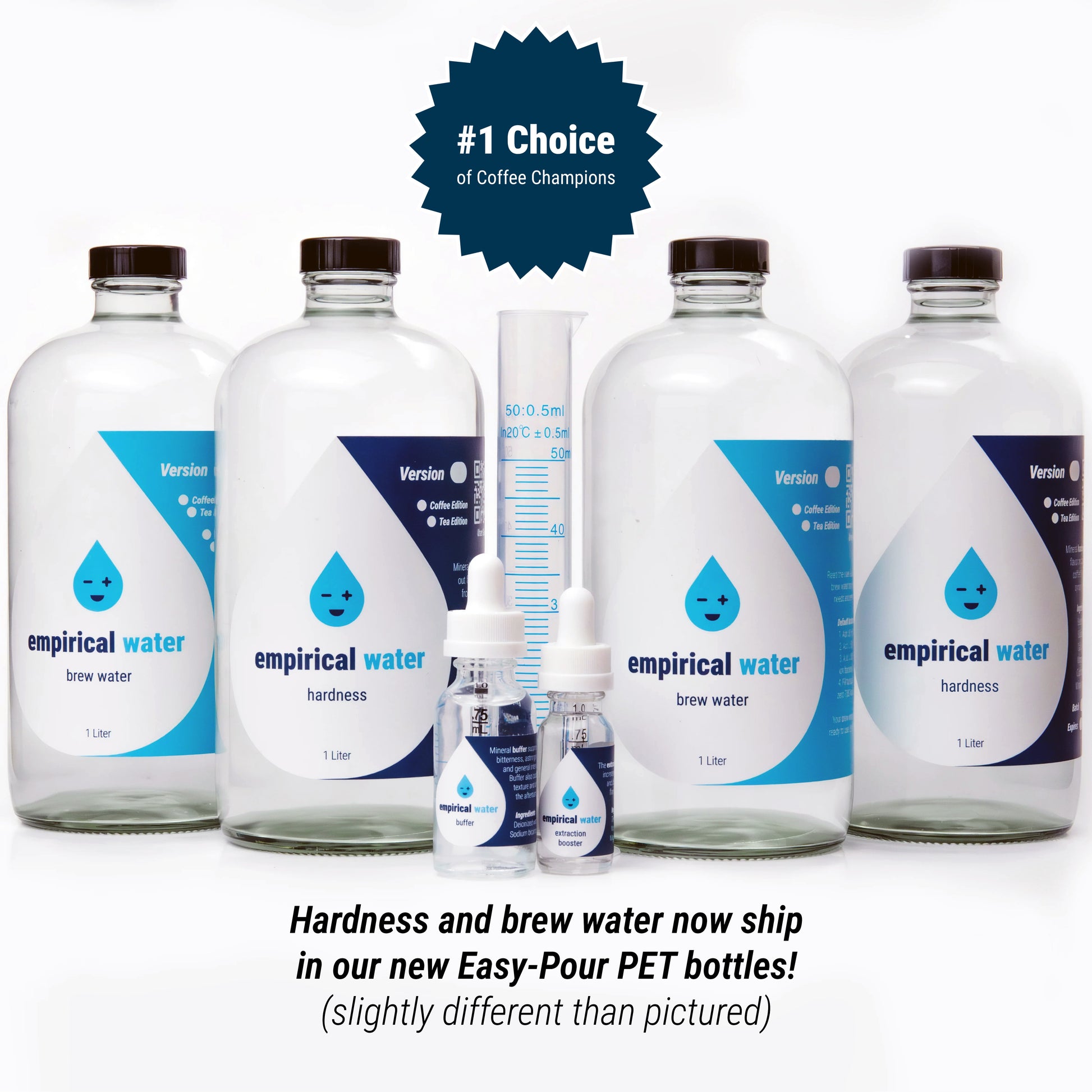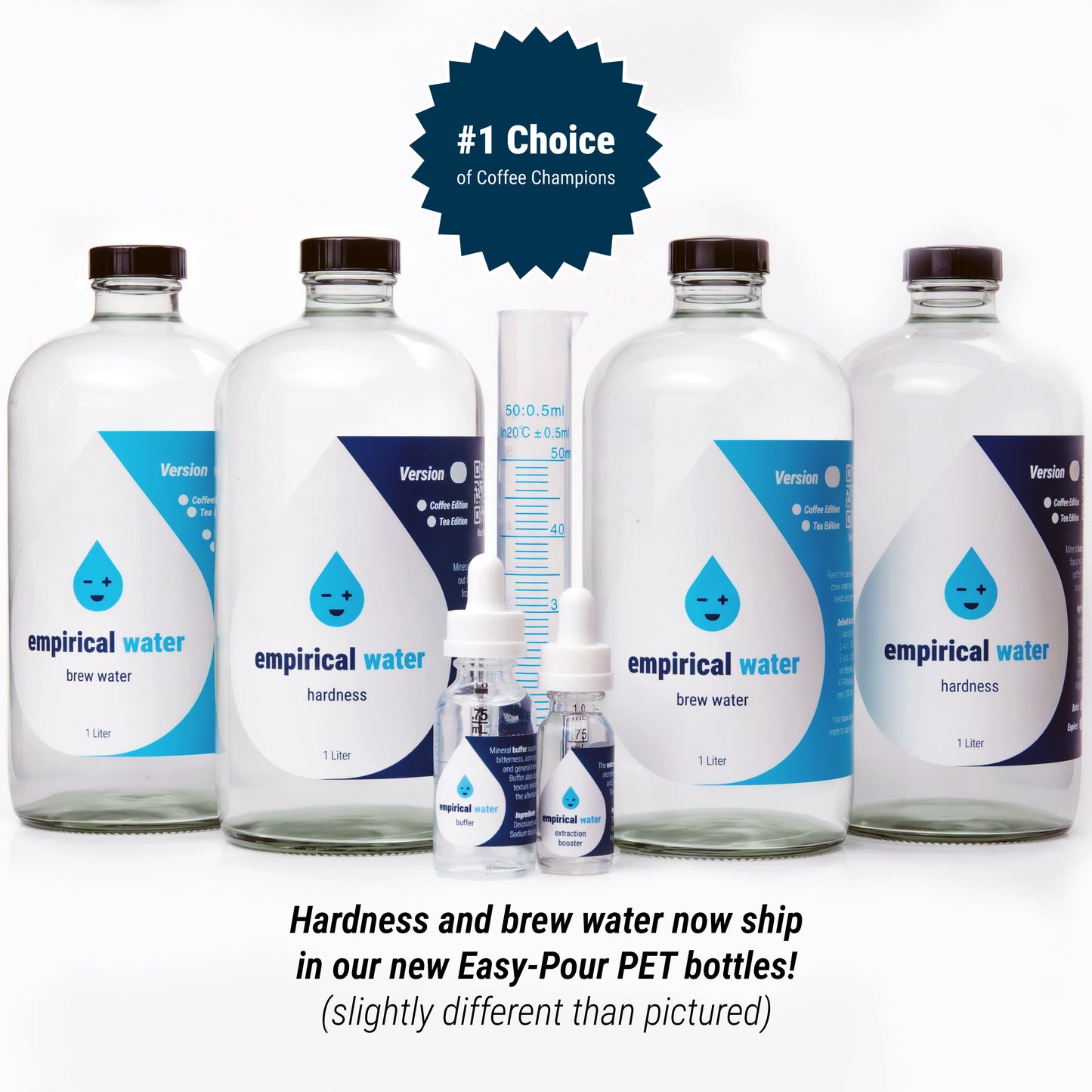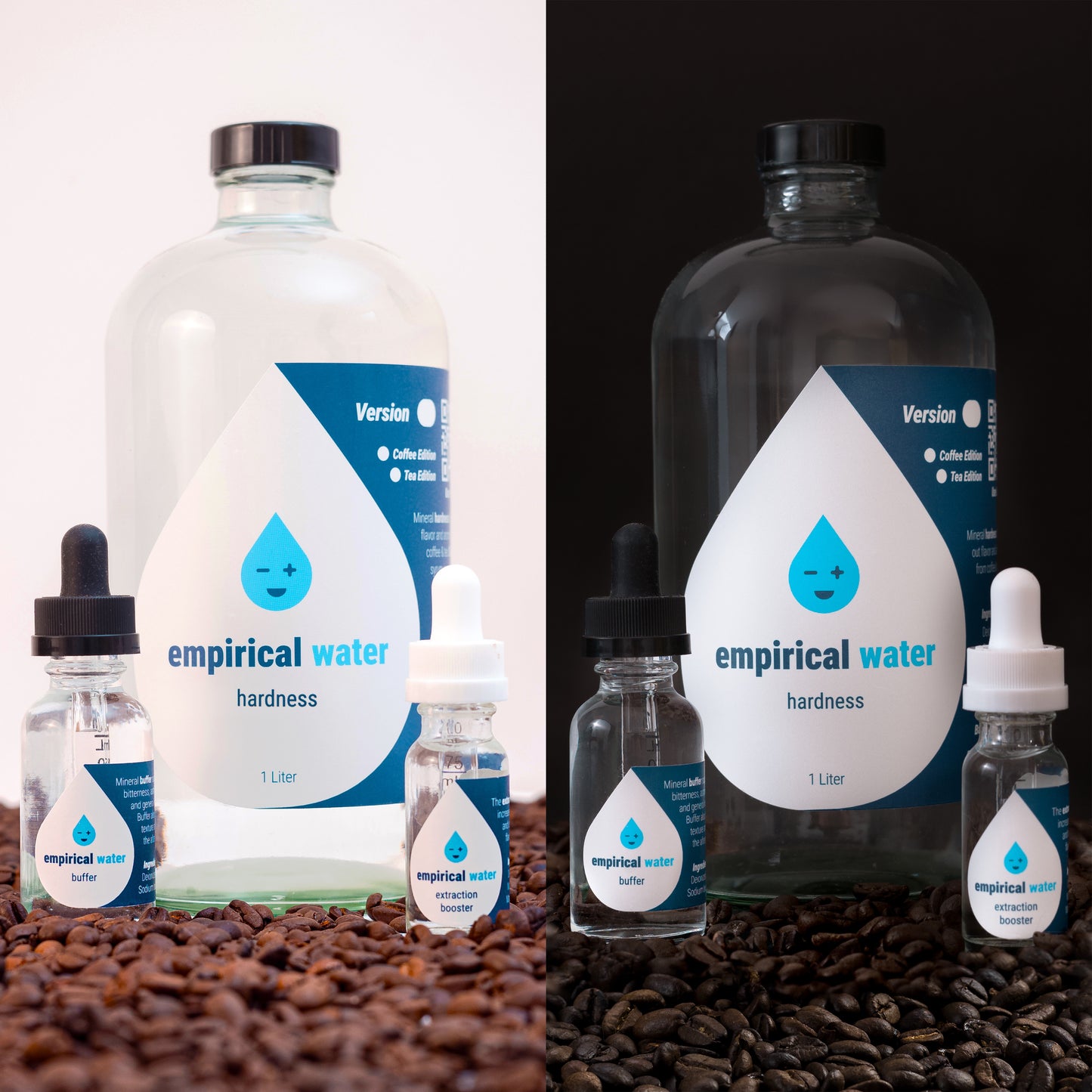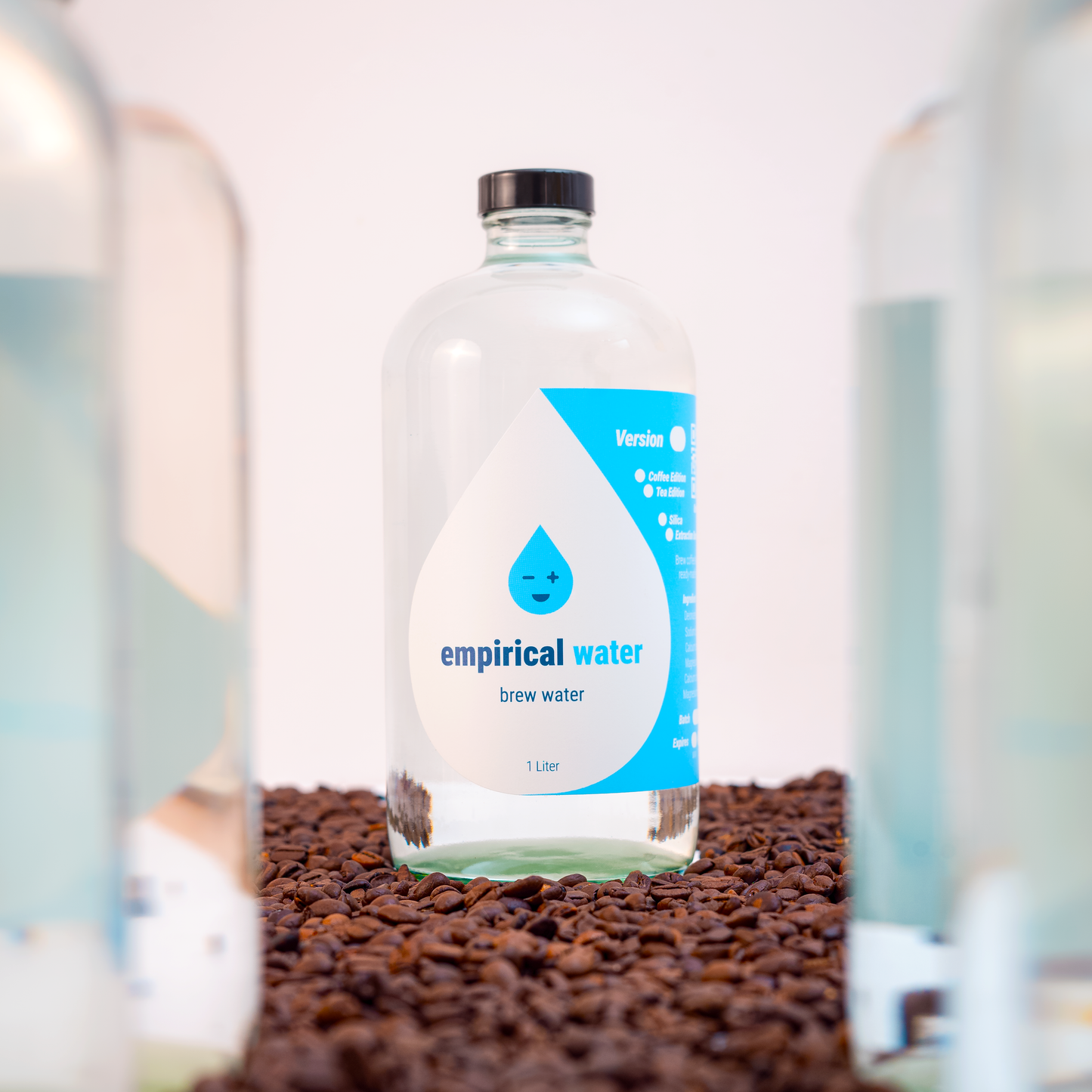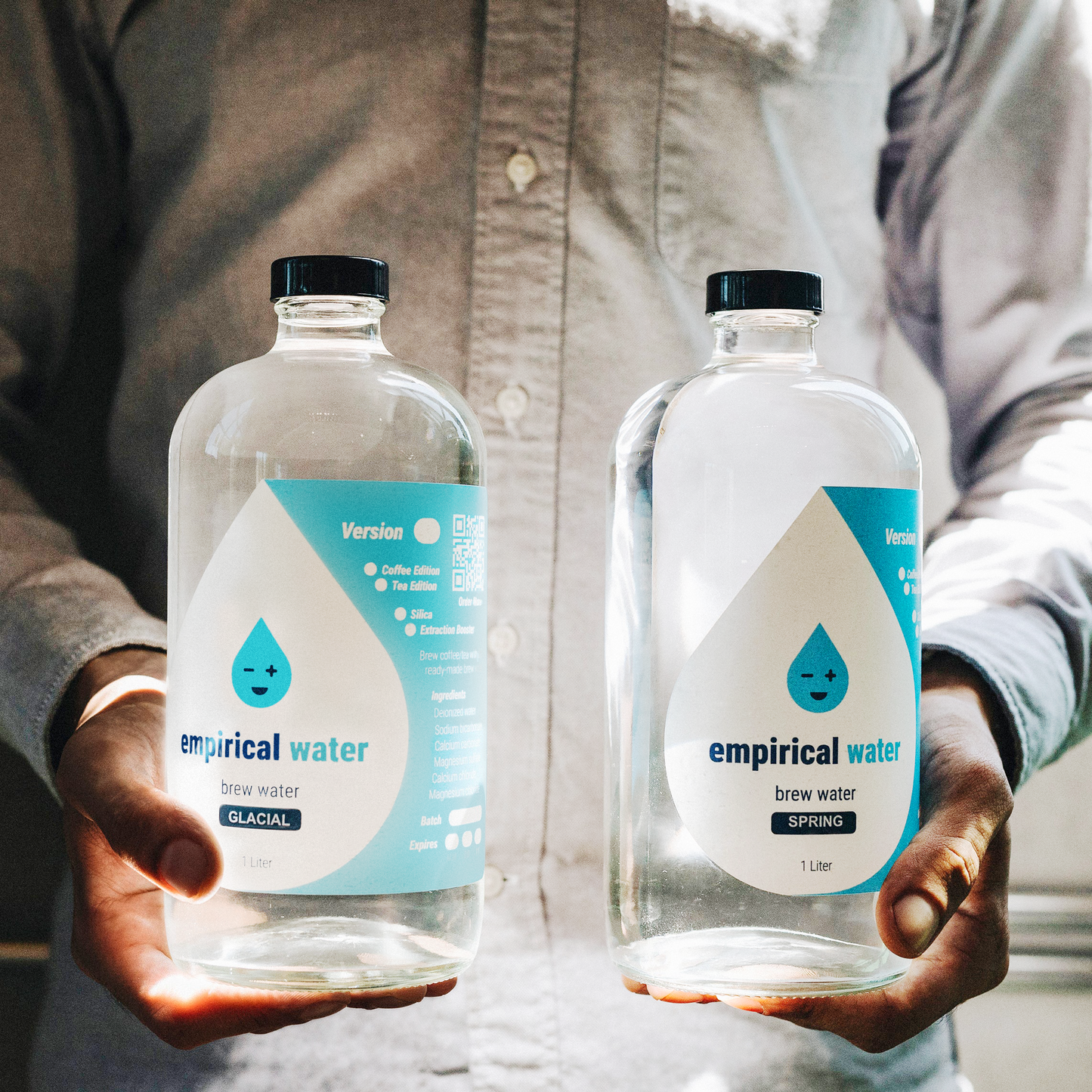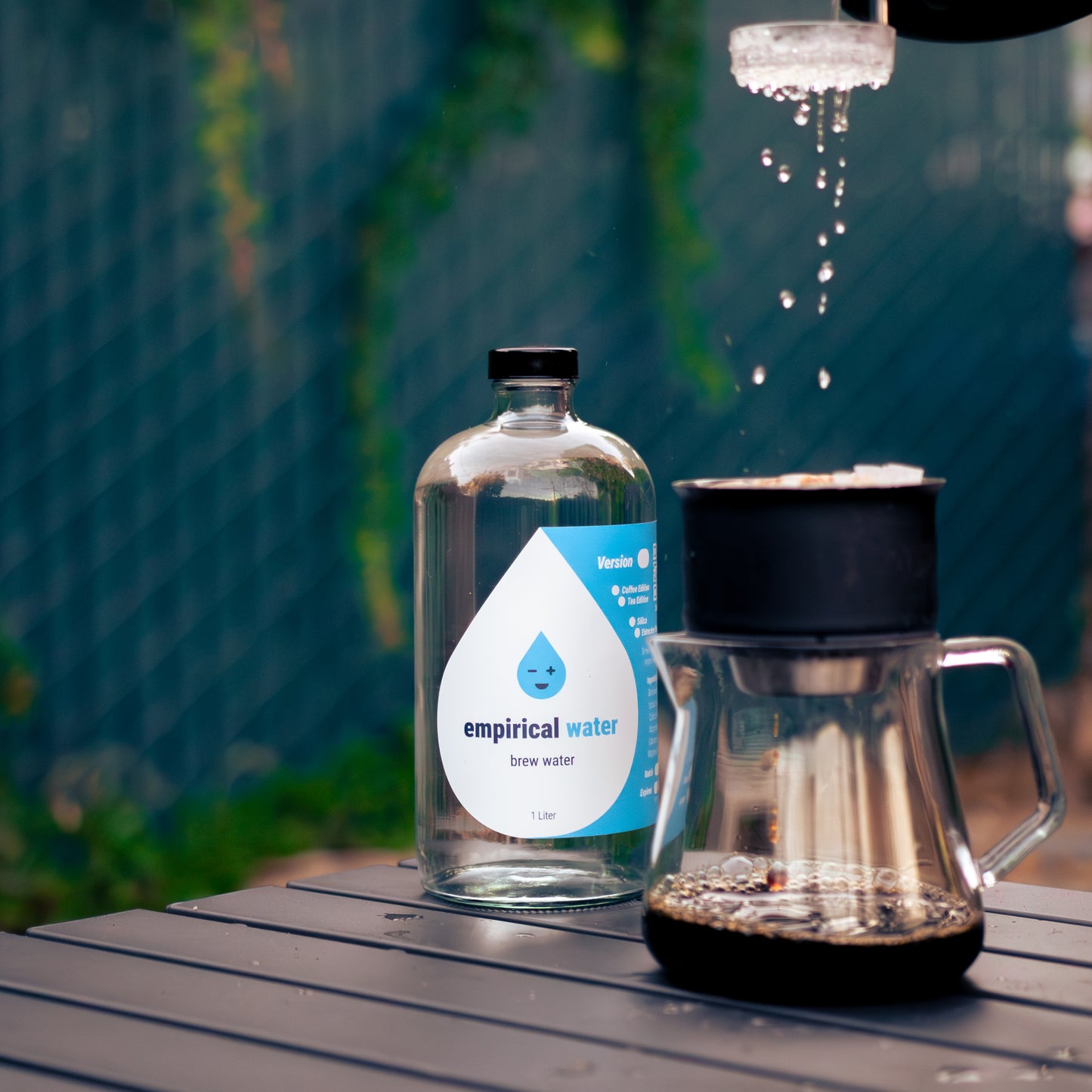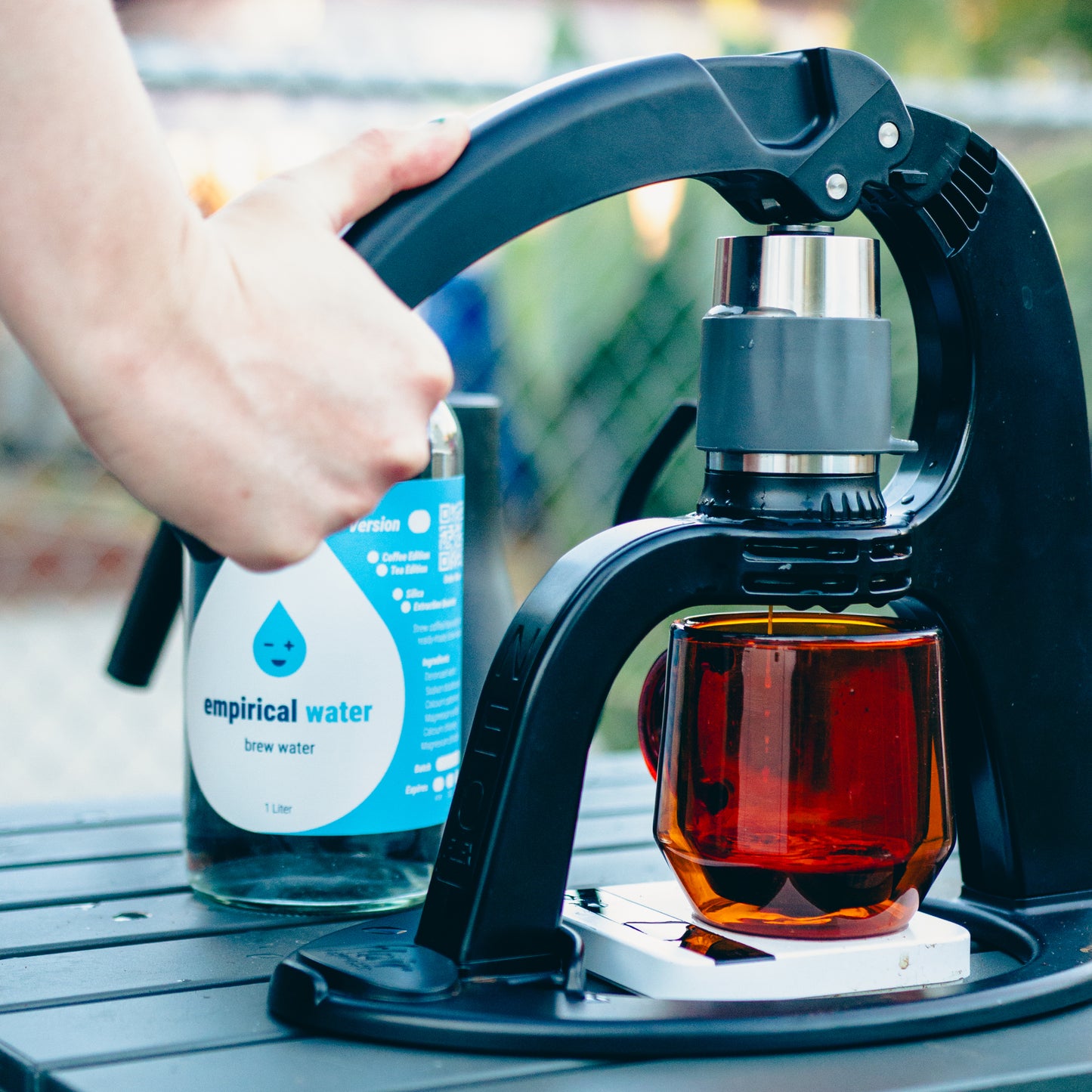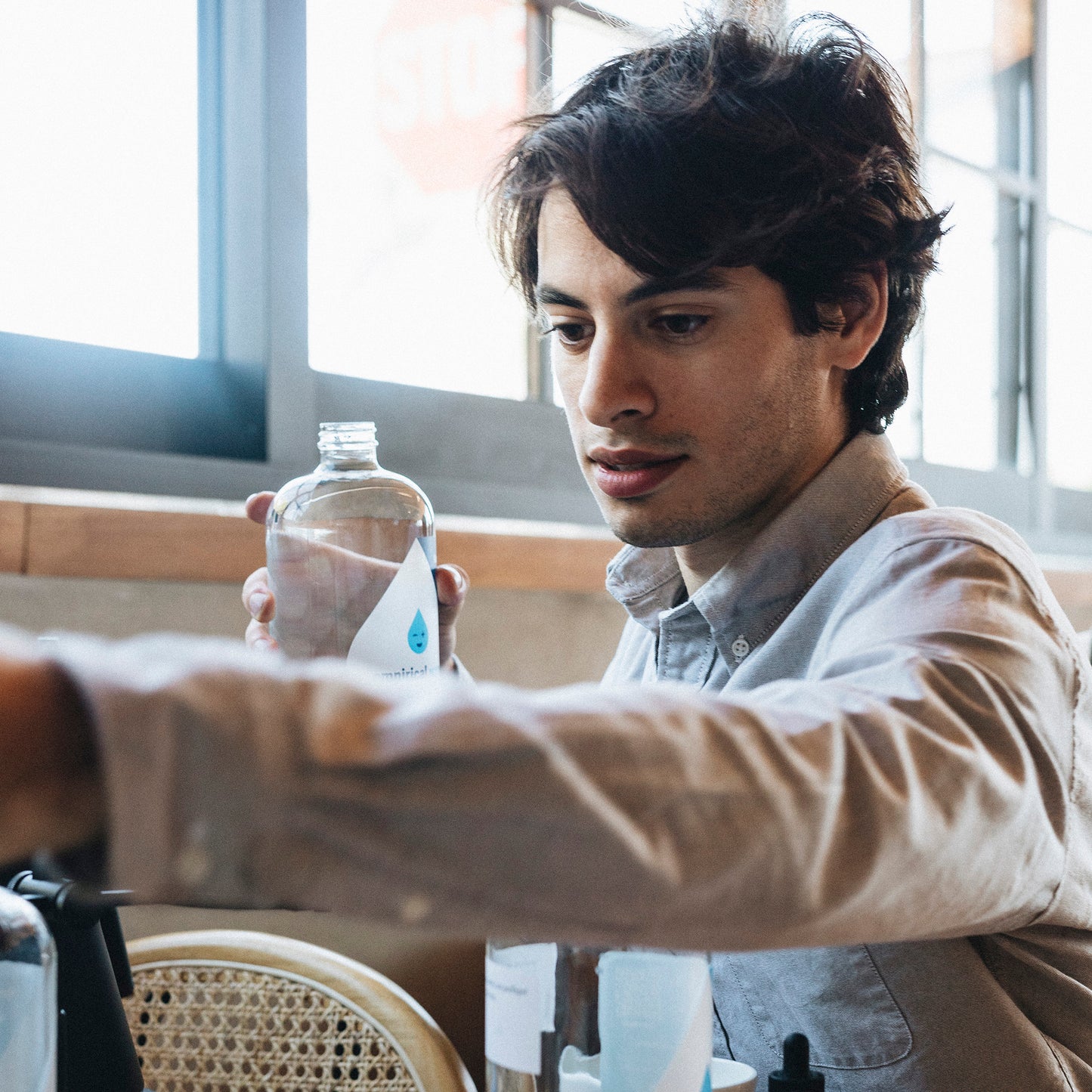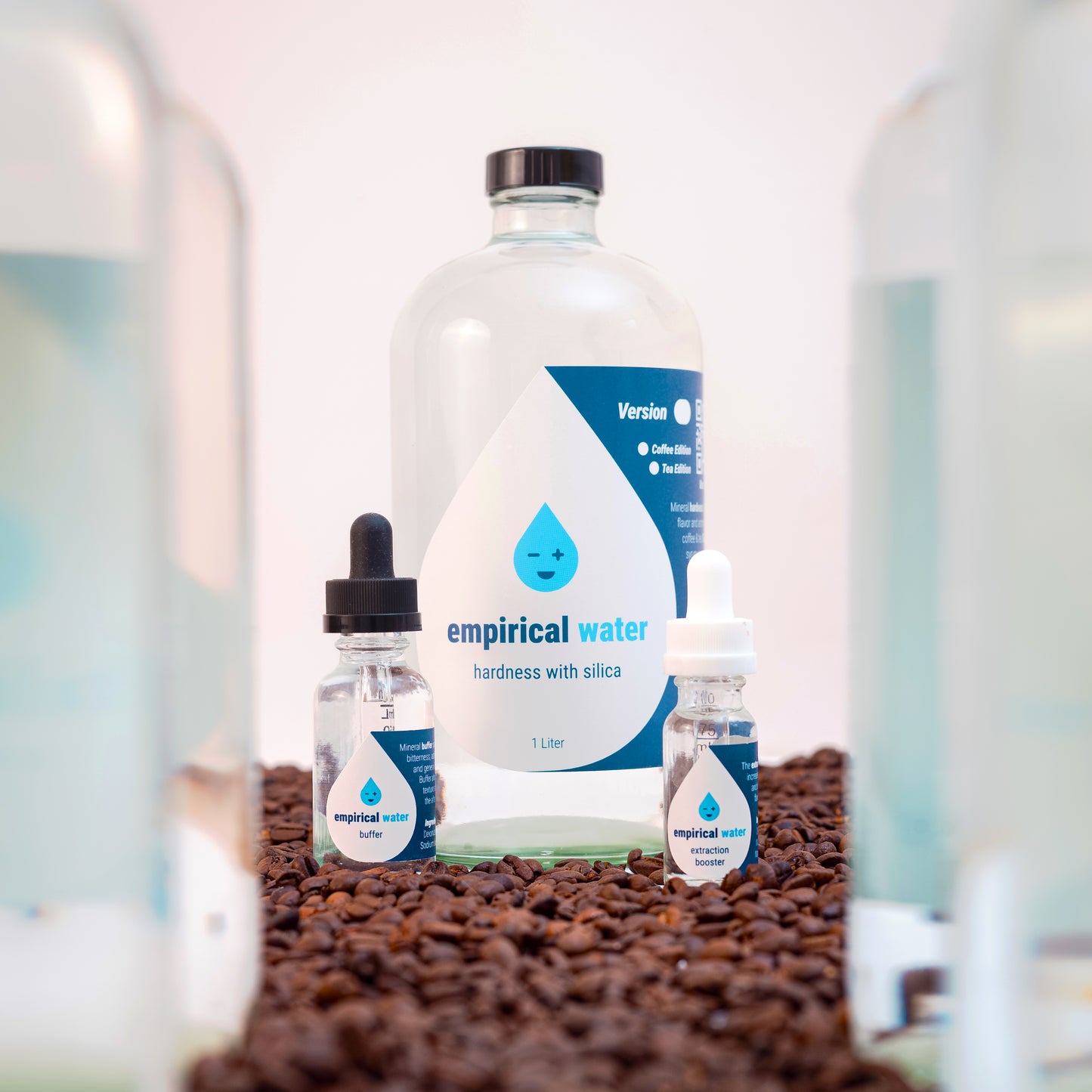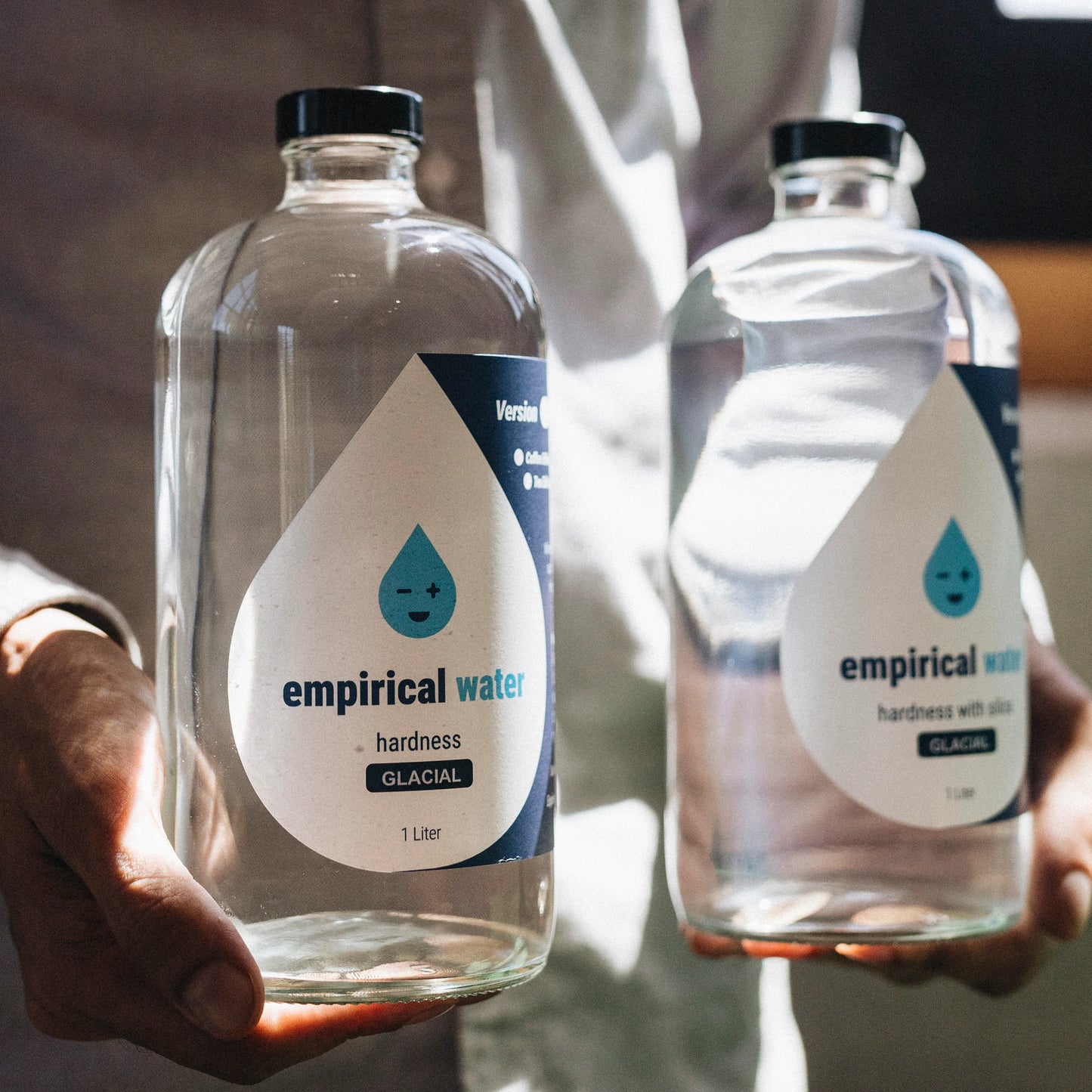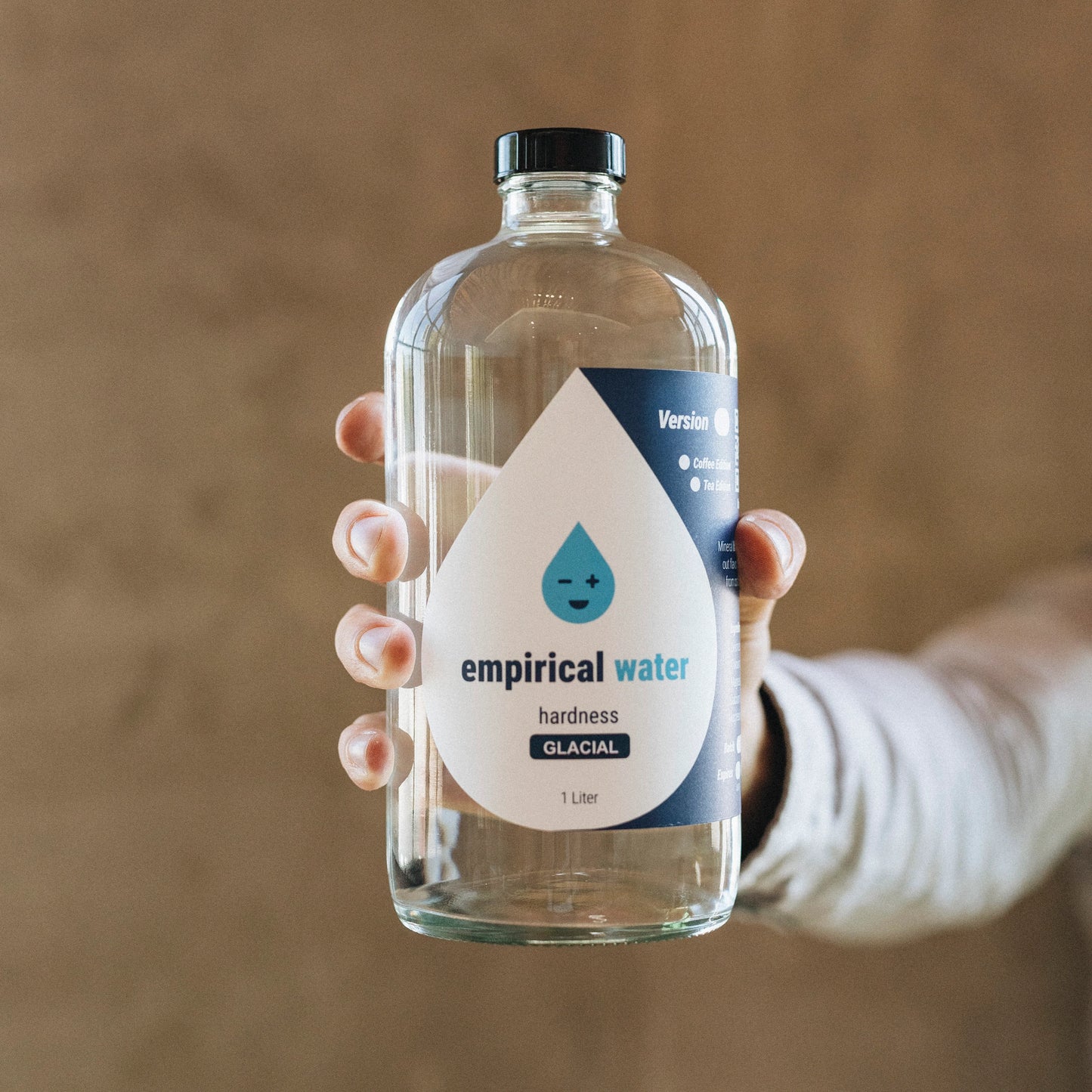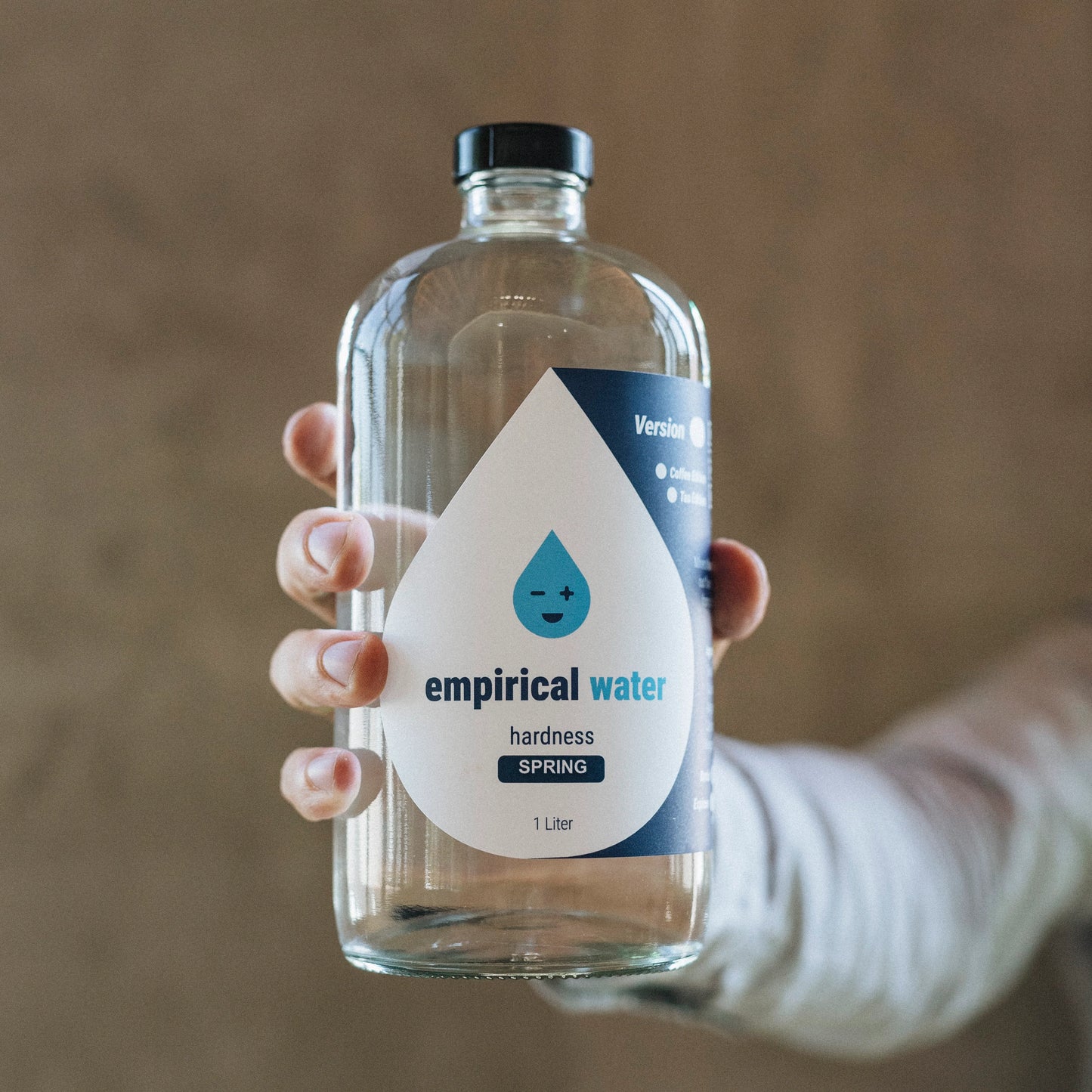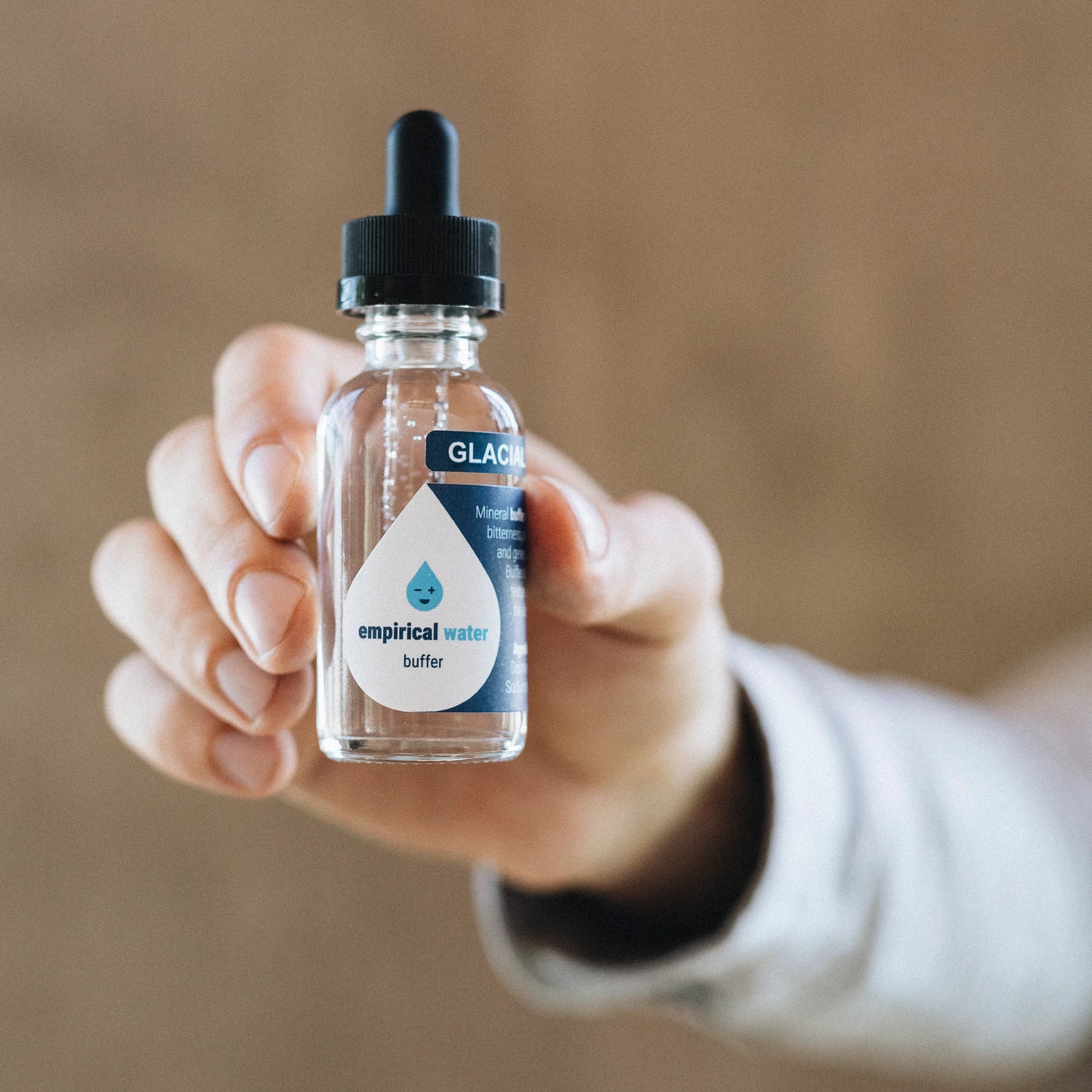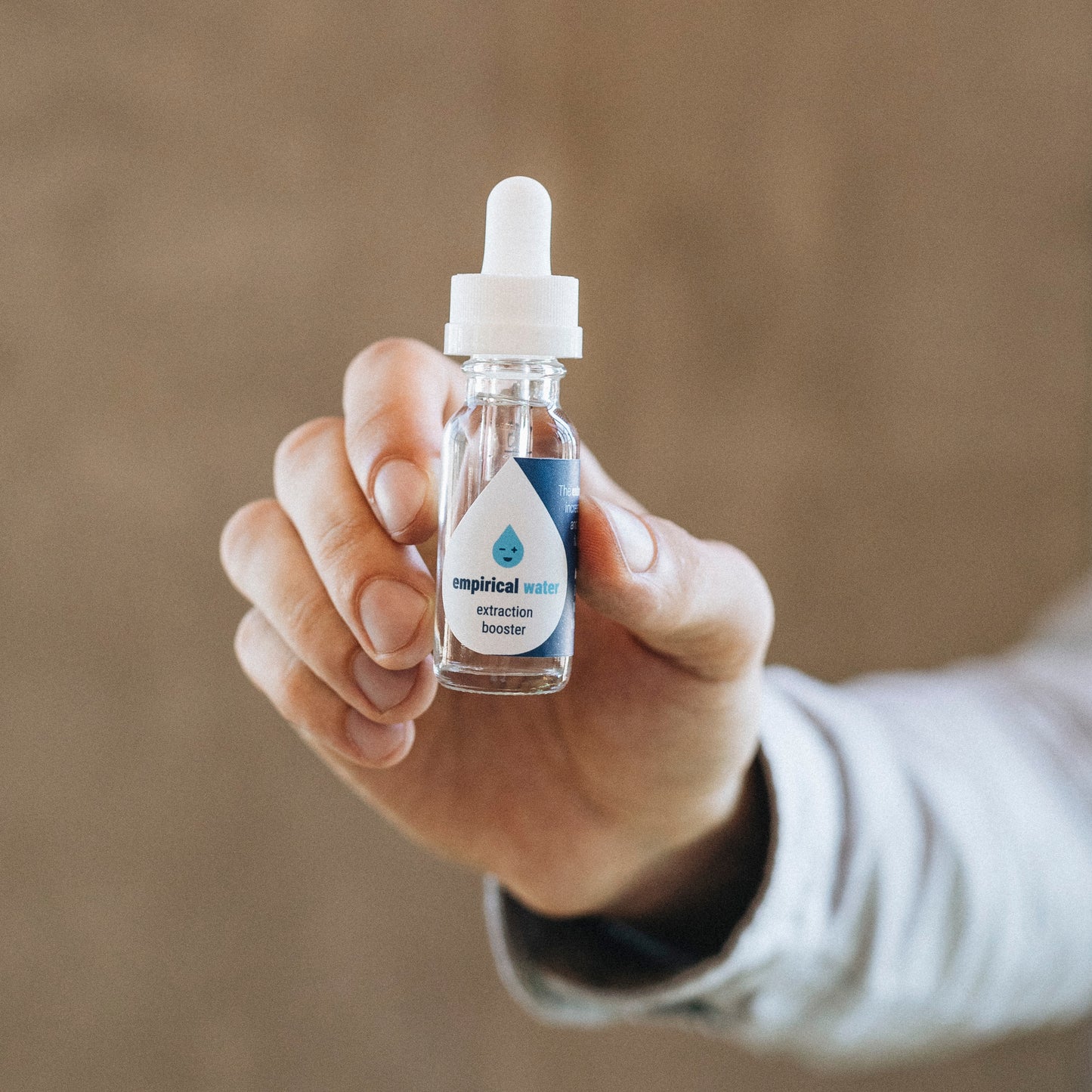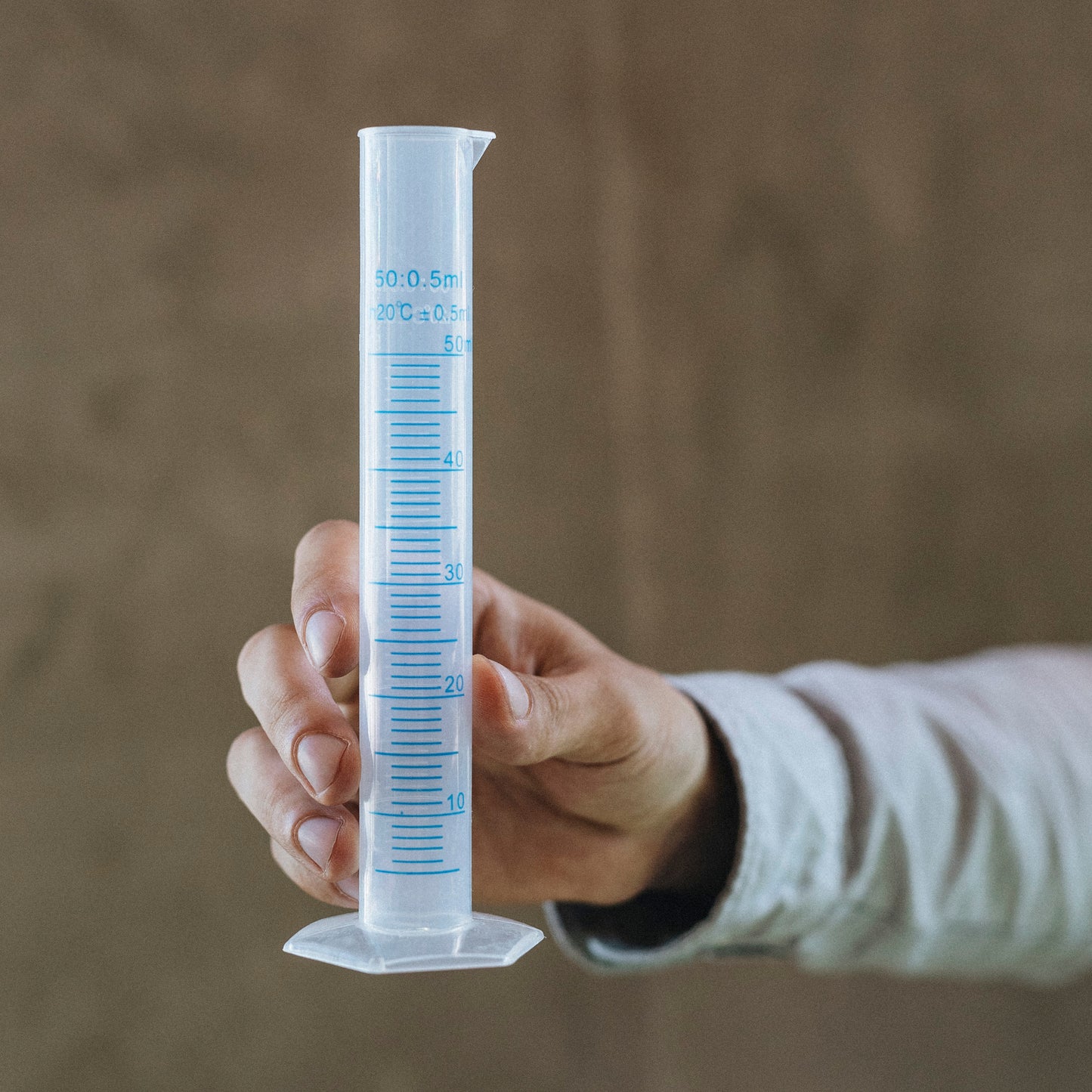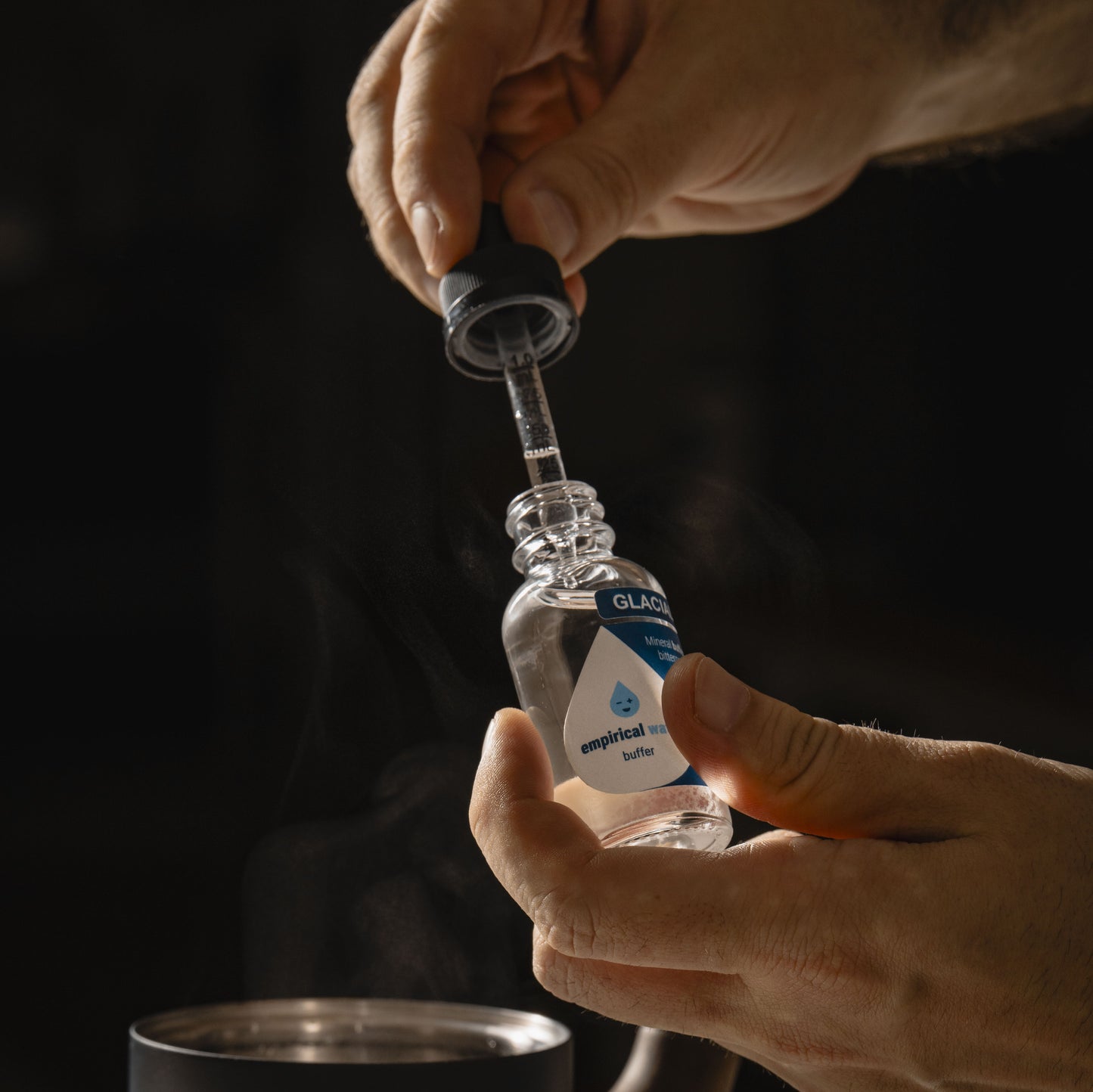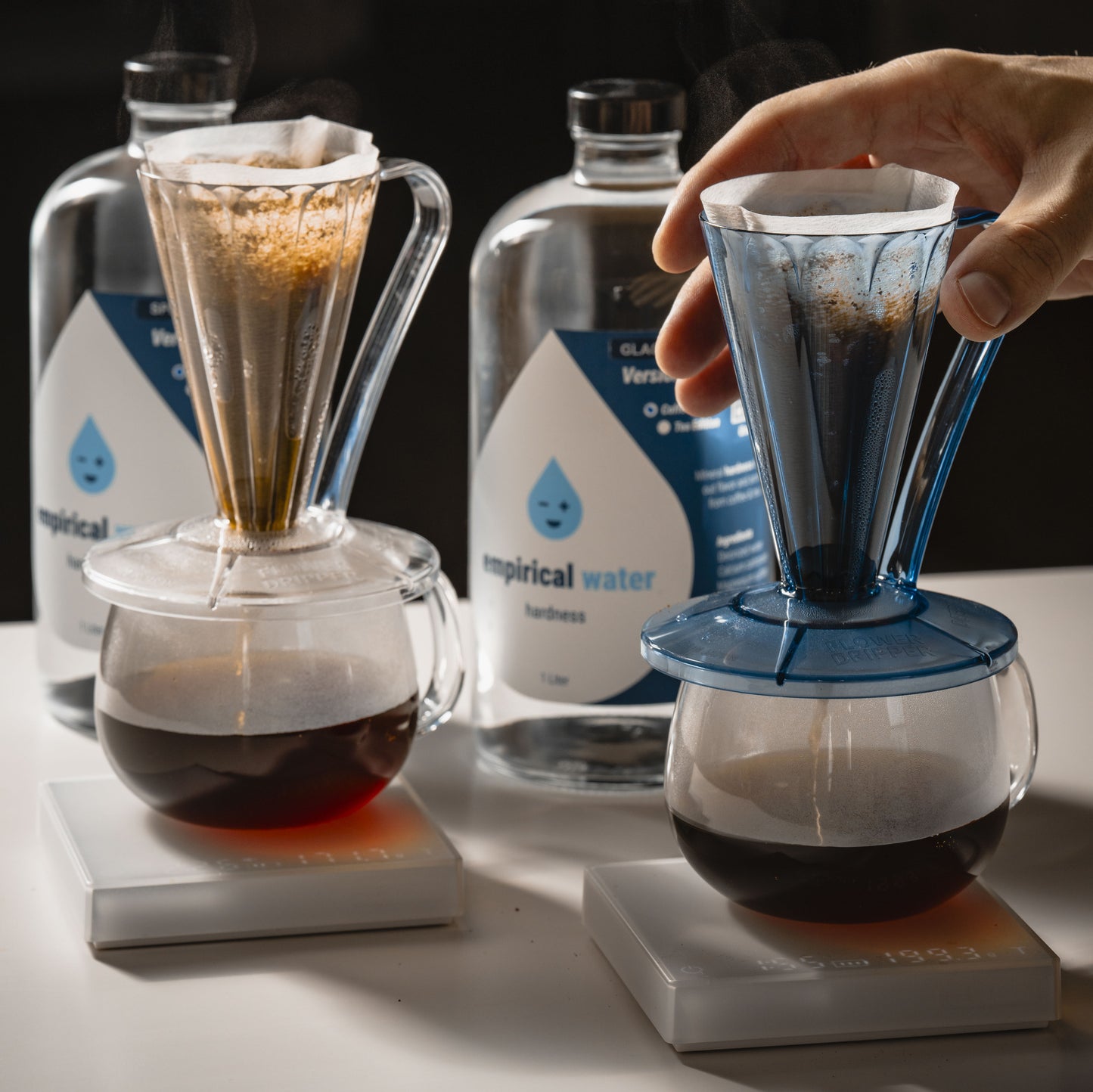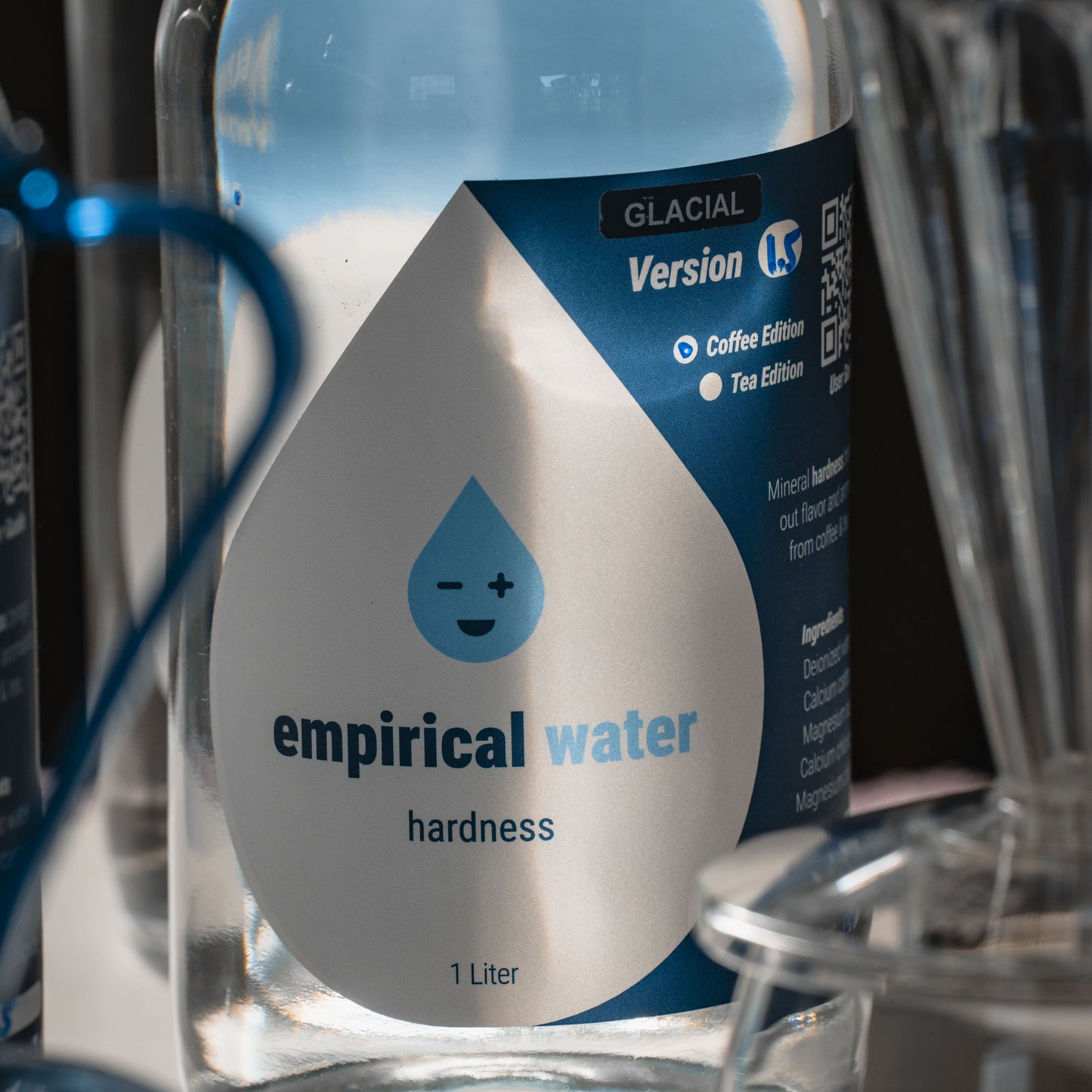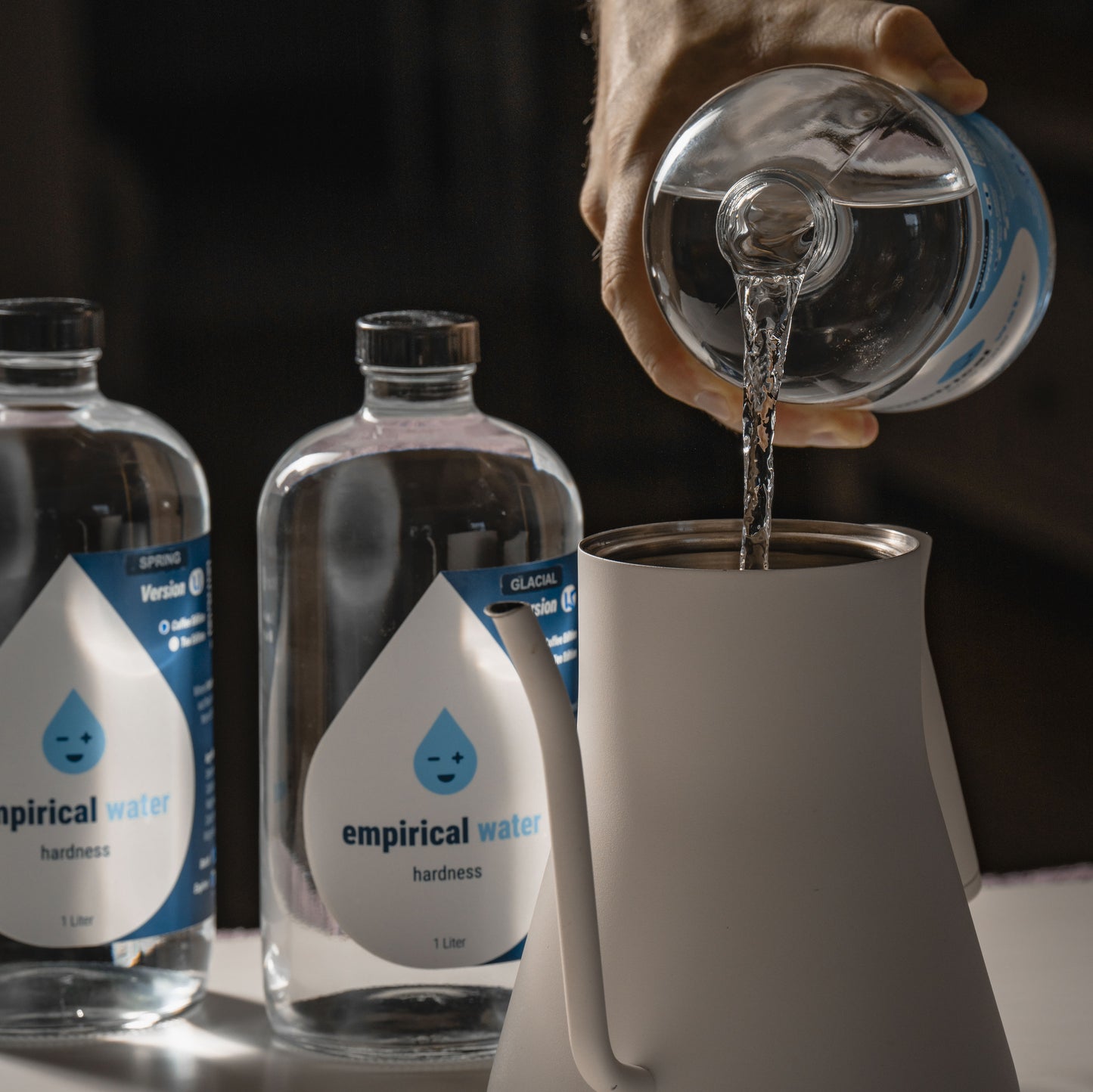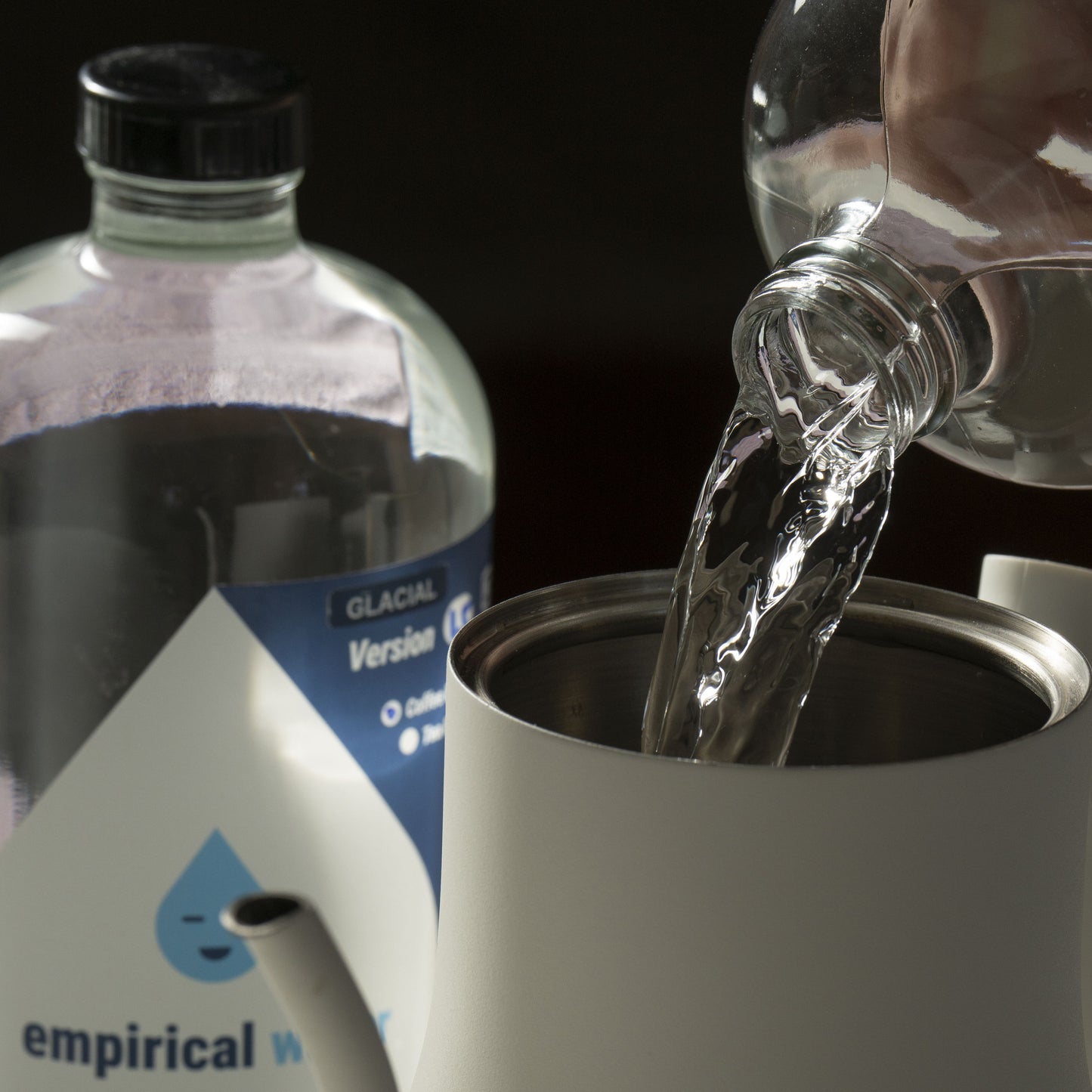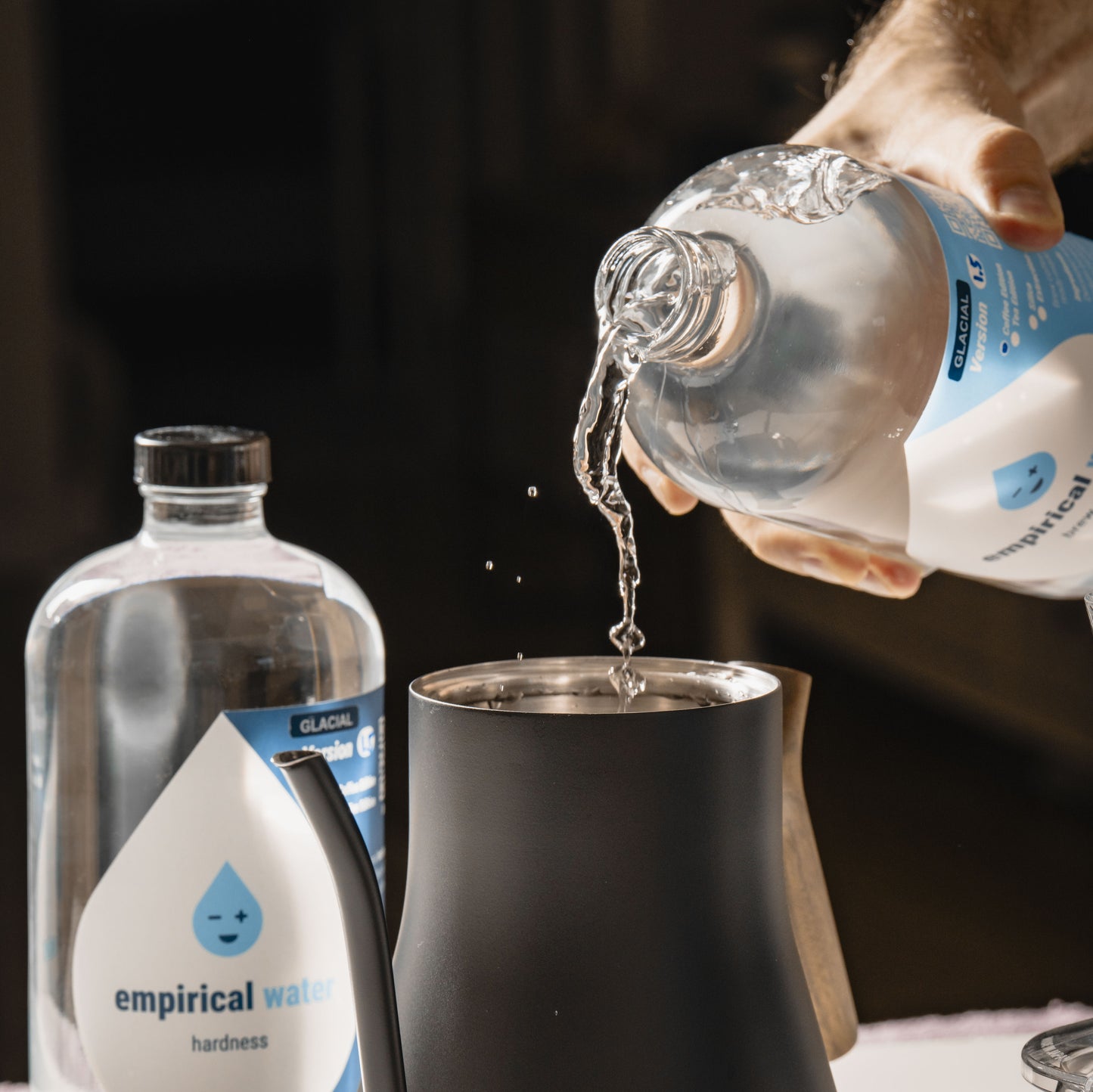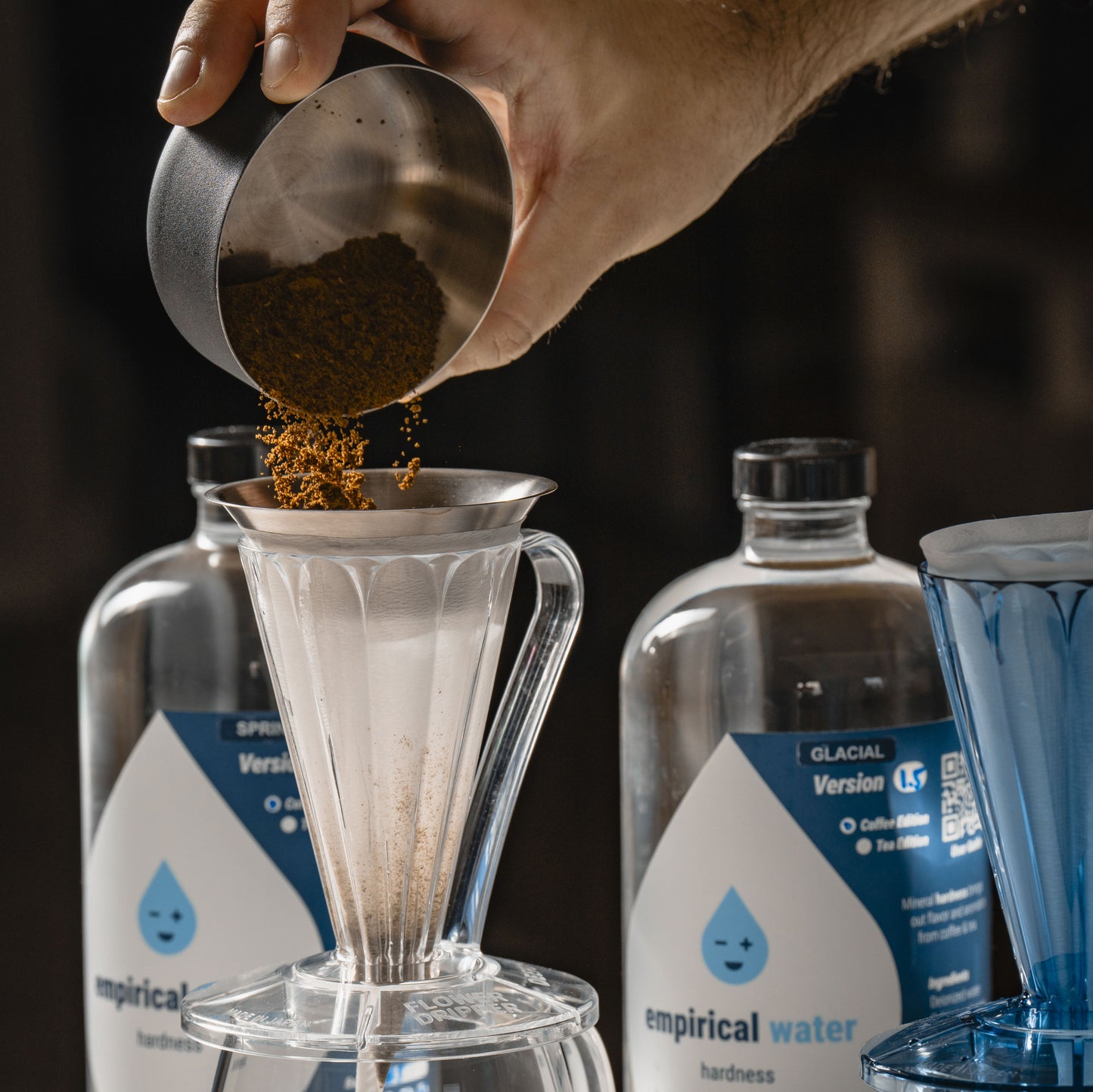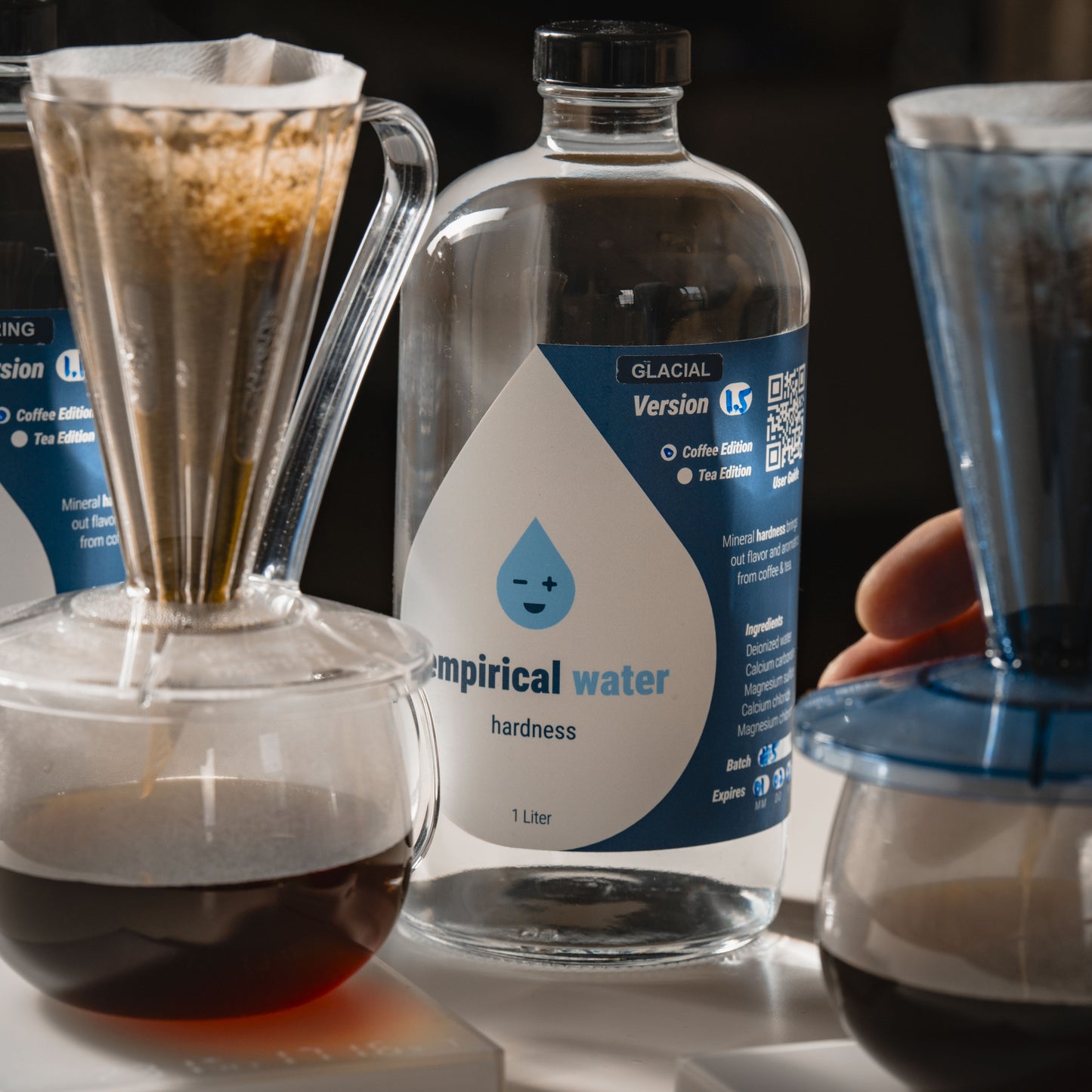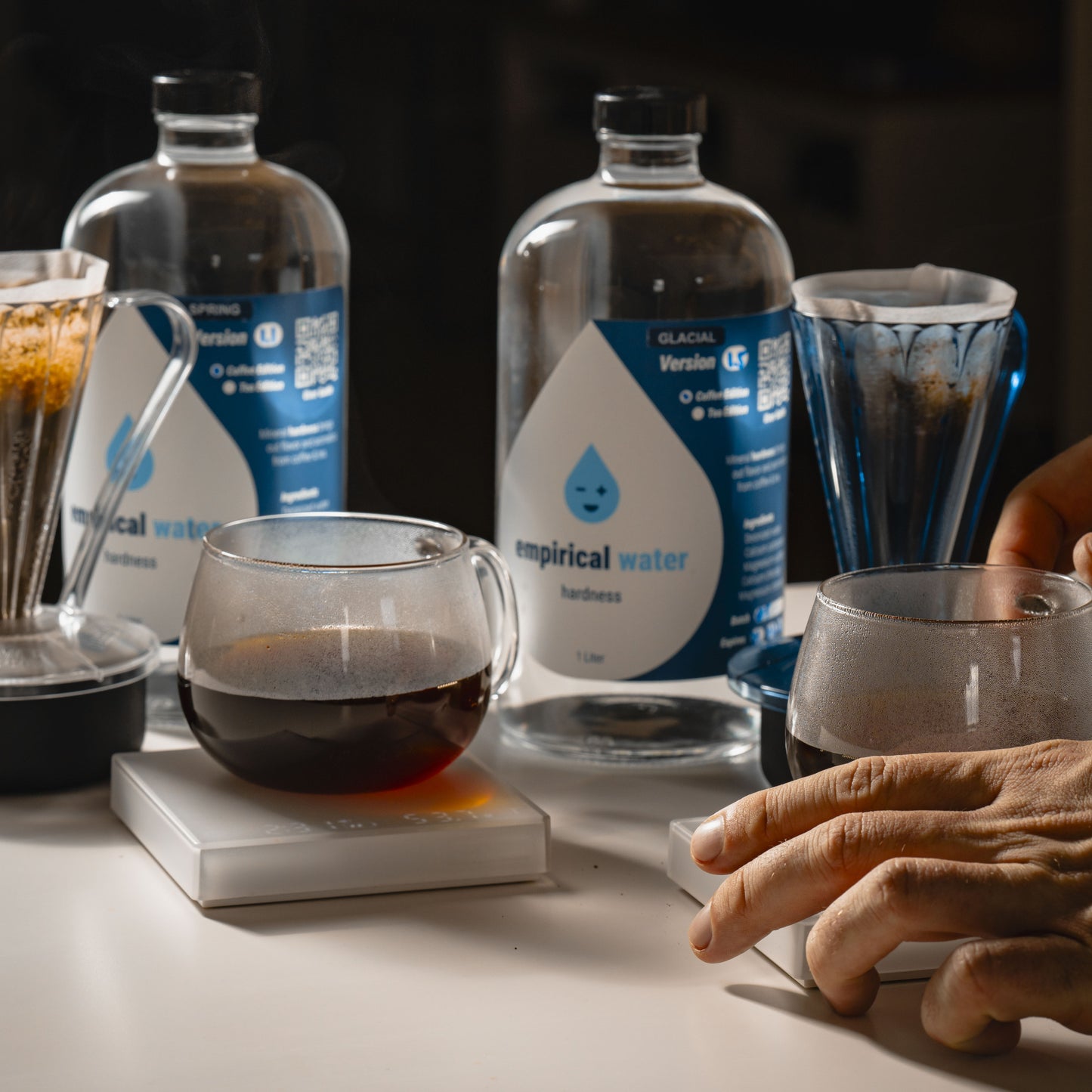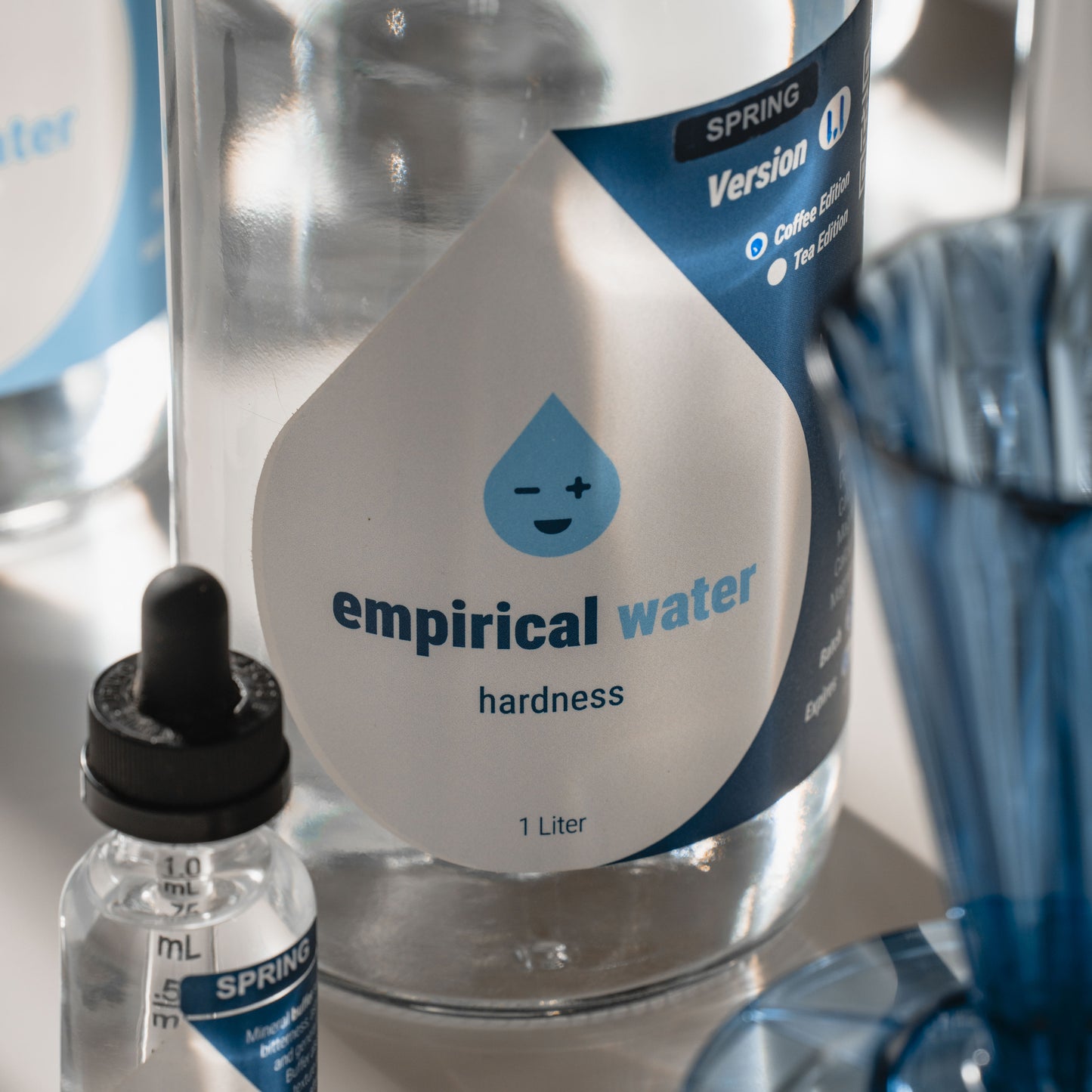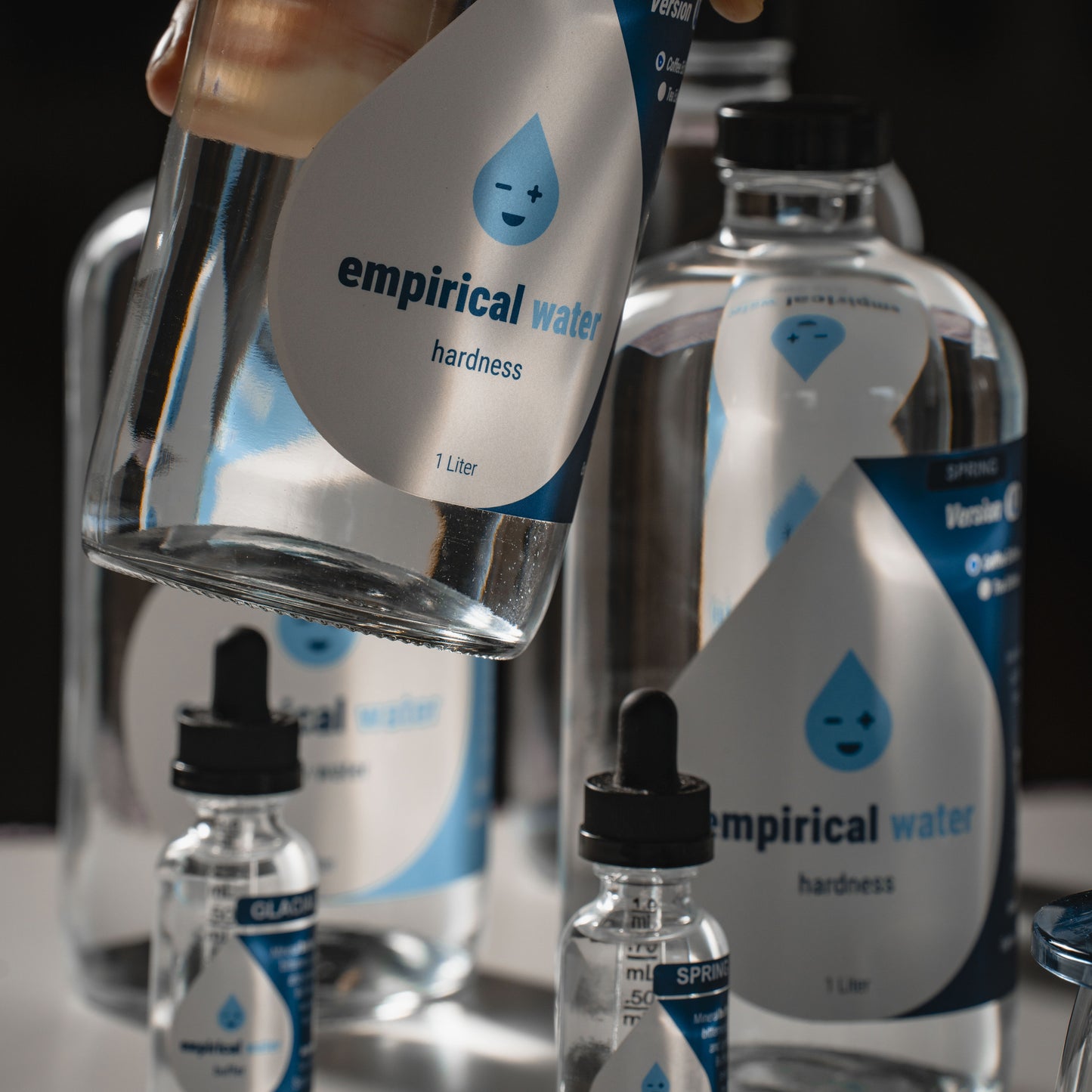3 min read
Introduction
Hi there. My name is Arby Avanesian, and I'm the developer of empirical water (see World Class Endorsements).

Are you familiar with Third Wave Water, Perfect Coffee Water, Lotus Water, Apax Lab, or Aquacode? How about DIY recipes from Barista Hustle, Scott Rao, Matt Perger, Jonathan Gagne, or Chris Hendon, among others?
Many of these folks have been instrumental in giving water its due credit in the process of brewing great coffee, and deserve recognition for laying the foundation.
Today, we build on that foundation. There is certainly room for advancement, given that those brew waters are optimized for mass production in the case of the branded products, and accessibility in the case of the DIY recipes. In other words, anyone can buy the constituent ingredients on Amazon and mix them into water in the same amounts as any of those products or recipes, with no extra steps.
Coffee water that's optimized for quality on the other hand, is a completely different animal. Enter empirical water, which pushes coffee water into the seriously under-explored territory of mineral compositions which are exclusive to naturally-occurring mineral water.
Producing empirical water takes time, labor, equipment, and know-how. It also requires a key ingredient that you won't find in any coffee water brand on the market.
The key ingredient
It's calcium carbonate.

AKA chalk, AKA calcite, AKA limestone. The finest naturally-occurring mineral waters from around the world all contain calcium carbonate.
This has been flying under the radar for far too long. I want everyone reading this to enjoy coffee as much as I do, and for that to happen, you simply need to have calcium carbonate in your brew water.
How does it work?
If you want me to explain how calcium carbonate works, you have to understand that you're asking some random guy to put on his chemist hat and talk all science-y as a way to establish his authority and gain your trust. If you want me to attempt that, click here.
But the truth is, I'm just some guy who's been playing around with this stuff, and I'm telling you, calcium carbonate just works.
What does it actually DO?
Calcium carbonate makes all your brew parameters so much more forgiving, that brewing amazing coffee becomes as effortless as breathing. Coffee comes out tasting more natural and pure when calcium carbonate is present in the brew water. You can also extract much more flavor and aromatics from the coffee beans before encountering any level of bitterness or astringency.
It's the principal differentiator of empirical water, along with its constantly evolving nature. I'm a hobbyist at heart, and will likely never stop tweaking the recipe to get the most out of coffee with incremental improvements.


